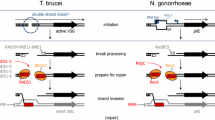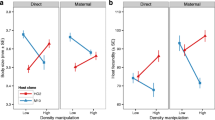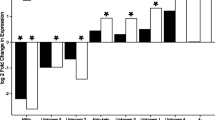Abstract
I find myself in a rather uncomfortable position in presenting this paper. The reason for this is that what I have to say does not support much of the speculation and dogma that has been presented in preceding papers. I feel like a non-believer in a congregation of believers. The belief seems to be that specificity of the interactions between host and parasite, and the restriction of development of the pathogen, are controlled by compounds not produced by transcription and translation. This I find difficult to reconcile with the known genetics of interactions. What I will try to do, therefore, is to present the kinds of results obtained from studies of the inheritance of genetic variability in host-parasite interactions, then proceed to describe some models and give examples of what the genetics tells me about those models of interactions, and conclude with some examples of uses of genetic arguments in studies of host-parasite interactions.
Preview
Unable to display preview. Download preview PDF.
Similar content being viewed by others
References
ELLINGBOE, A.H. (1976). Genetics of host-parasite interactions. In : Encyclodpedia of Plant Physiology New Series, Vol. 4, Physiological Plant Pathology, Eds. R. Heitefuss and P.H. Williams. Springer-Verlag, Berlin, Heidelberg, New York
ELLINGBOE, A.H. & GABRIEL, D.W. (1977). Induced conditional mutants for studying host/pathogen interactions. In: Induced mutations against plant diseases. International Atomic Energy Agency, Vienna
FLOR, H.H. (1955). Host-parasite interaction in flax rust - its genetics and other implications. Phytopathology 45, 680–685
KEEN, N.T. (1980). Mechanisms conferring specific recognition in gene-for-gene plant-parasite systems (this Symposium)
LAWRENCE, G.J., MAYO, G.M.E. & SHEPHERD, K.W. Interactions between genes controlling pathogenicity in flax rust. Phytopathology in press
LOEGERING, W.Q. (1978). Current concepts in Interorganismla Genetics. Annual Review of Phytopathology 16, 309–320
RASCHKE, W.C., KERN, K.A., ANTOLIS, C. & BALLOU, C.E. (1973). Genetic control of yeast mannan structure-isolation and characterization of mannan mutants. Journal of Biological Chemistry 248, 4660–4666
WADE, M. & ALBERSHEIM, P. (1979). Race-specific molecules that protect soybeans from Phytophthora megasperma var. sojae. Proceedings National Academy of Science, U.S.A. 76, 4433–4437
Author information
Authors and Affiliations
Editor information
Editors and Affiliations
Rights and permissions
Copyright information
© 1982 Plenum Press, New York
About this chapter
Cite this chapter
Ellingboe, A.H. (1982). Genetical Aspects of Active Defence. In: Wood, R.K.S. (eds) Active Defense Mechanisms in Plants. NATO Advanced Study Institutes Series, vol 37. Springer, Boston, MA. https://doi.org/10.1007/978-1-4615-8309-7_10
Download citation
DOI: https://doi.org/10.1007/978-1-4615-8309-7_10
Publisher Name: Springer, Boston, MA
Print ISBN: 978-1-4615-8311-0
Online ISBN: 978-1-4615-8309-7
eBook Packages: Springer Book Archive




